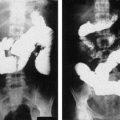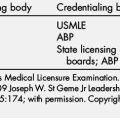School-Based Health Centers: A Model for the Provision of Adolescent Primary Care
Case study
Annie (identity disguised) is a student at one of the public high schools where a school-based health clinic (SBHC) is located in the building. Annie is called to the clinic during school to receive her second human papilloma virus (HPV4) vaccination. The medical assistant checking her into the clinic noticed that she has lost quite a bit of weight. When questioned further, Annie stated that she was not trying to lose weight. The medical assistant had her see the primary care provider in the clinic instead of only vaccinating her and sending her back to class. After a history and physical examination were obtained, the clinician notes that Annie has experienced polyuria and polydipsia. A urinalysis in the clinic displays glucosuria and ketonuria. Fortunately, she was not severely acidotic at this time. Ultimately, Annie was referred to endocrinology and diagnosed as having Type I diabetes.
Health care of adolescents can be challenging for a primary health care provider in a typical clinic or office setting. Adolescents are the least likely group of patients to seek health care in traditional clinic settings [1]. Many of the health needs of this age group are unique in nature related to risky health behaviors, such as unprotected sex, substance abuse, and violence. Traditional health care settings are often not adequate and primary health care providers in these settings do not have the time to delve into the risky behaviors of this patient population. Although this case study does not highlight one of these risky behaviors, it does illustrate an advantage of having a clinic in a setting that is convenient for at-risk youth. It is likely that because of barriers faced by this teenager, her presentation as a new diabetic would have been more severe had it not been for the clinic located in her school.
It is difficult for children to attend school and learn if they are sick. Illness for the adolescent may come in the form of either physical health or mental health. These illnesses may commonly be chronic and need follow-up care. Learning is affected by high absenteeism rates associated with chronic illness and disciplinary actions related to behavior and mental health issues. Delay or failure of high school graduation is also affected by teen pregnancy rates [2].
The major focus of Healthy People 2010 was access to quality health care for every person [1]. Access to care for adolescents remains an issue despite improvements in health care access for the general United States population. Adolescents have an average of 2 visits to a health care provider each year, fewer than any other age group with the exception of young adults [3]. Lack of health insurance, convenience, confidentiality, and cost are all factors that may affect teenagers’ ability to access health care.
The objective of this article is to describe the evolving models of SBHCs in the United States. To date, peer-reviewed studies have documented the success of SBHCs in decreasing emergency room use and improving access to preventive services, such as immunizations. The authors highlight the long-standing comprehensive model located in Denver.
School-based health centers
School-based health centers present a solution to some of the barriers by adolescents related to access to care, school absenteeism, and their unique health care needs. Comprehensive services offered in the place where adolescents spend their days has become an alternative to traditional primary health care for this age group. Although this model has existed for decades, generally knowledge of SBHCs among health care workers remains limited.
History
School-based health centers originated to provide health care to underserved children in urban areas. With the support of the Community Access to Child Health program, a part of the American Academy of Pediatrics, the first school-based health centers opened in the late 1960s and early 1970s. The first centers opened in Cambridge, Massachusetts and were organized by Philip J. Porter, a local pediatrician. More centers followed in Minneapolis and Dallas. The Robert Wood Johnson Foundation supplied funding for several new centers in 1978. State level funding assisted the further growth of school-based health centers throughout the country. In 1995, federal funding came from the Health Resource and Service Administration in the form of Healthy Schools-Healthy Communities grants to build more school-based health centers [1].
As of November, 2009, more than 1900 school-based health centers existed across the United States, including those centers that are school linked and mobile. The majority of the centers are based in high schools (33.3%) but with the increase in centers, more are found in middle schools, elementary schools, and combination schools. More than half of the school-based health centers have been open for at least 10 years. The concentration of school-based health centers remains in urban areas, having more than 50%, but there has been an increase in rural centers. A variety of ethnic backgrounds are found in the student populations served with 36.8% Hispanic, 29.5% white, and 26.2% African American [4].
The growing popularity of this model has lead to the creation of a national organization representing school-based health centers. The National Assembly of School-Based Health Care (NASBHC) located in Washington, DC states that its mission is to improve the health status of children and youth by advancing and advocating for school-based health care. NASBHC reported 16 different state affiliates in 2010. In its 2009 annual report, NASBHC reported that the number of SBHCs had doubled from 1000 to more than 2000 since 1995 [5]. Aside from growth and organizational structure, SBHCs have also received recent validation through federal language in both the Children’s Health Plan reauthorization and the Patient Protection and Affordability Act. Both acts of Congress establish SBHCs as sites for comprehensive primary care, which enhance opportunities for billing and federal funding.
Models of care
The majority of school-based health centers are built based on a primary care model with the primary care provided by a nurse practitioner, a physician’s assistant, or physician. There are 3 variations of this model: primary care, primary care and mental health, or primary care and mental health plus. The primary care model may have medical assistants, registered nurses, or licensed practical nurses that complement and support the services offered by the primary care provider. This model does not include mental health services. The primary care and mental health model combines the services of a primary care provider with the those of a mental health provider who is either a licensed clinical social worker, psychologist, or substance abuse counselor. The primary care and mental health plus model have expanded services that may be dental, health education, or case management services [4].
Services
There are a variety of services that may be offered at any of the school-based health centers. The most common services include comprehensive health assessments, acute minor illness care, health screenings, chronic illness care (eg, asthma), immunizations, and anticipatory guidance. Many centers provide medications for treatment of acute minor illnesses and chronic care. These medications are dispensed on-site and taken home. Laboratory testing and referral to specialty services are also included in the care [4].
Reproductive health services are a component of the primary care services in school-based health centers. Many centers offer testing and treatment for sexually transmitted infections, pregnancy testing, family planning counseling, and referral for contraceptive methods. However, local school and community policies may limit such testing and the delivery of services for related health topics [6]. For example, despite the fact that most centers provide some form of reproductive health service, the percentage of those who offer contraception is difficult to estimate because it ranges drastically by region [7]. The majority of centers refer to other health care facilities for the actual acquisition of the contraceptive methods [4].
Although all centers screen for mental health needs, not all provide therapeutic services on-site. Of those that do, services vary from individual to group and family therapy. Therapists care for anxiety disorders, posttraumatic stress disorders, depression, and adolescent adjustment disorder. The counselors are able to screen for depression, provide grief therapy, report abuse, case manage, and maintain confidentiality [1]. Psychiatric consultation is available in some centers along with mental health medication management [4]. Substance abuse counseling separate from mental health care is offered by some centers [1].
Prevention and early intervention are a major focus of school-based health center care. Besides the preventative care offered by the primary care provider, a health educator may work with students emphasizing such topics as pregnancy prevention or nutrition. These educators meet individually with students to give counseling and classroom instruction in these areas.
Dental services, such as dental screenings, cleaning, and sealants, are provided as part of the services in approximately 10% to 25% of the centers [8]. The availability of space and cost of equipment limit the expansion of this service. Primary care providers in many centers report providing oral health education and referral to various dental facilities as possible.
Follow-up care is a vital component of the care in school-based health centers. Primary care providers in traditional settings experience the limitations of access, cost, and compliance when following patients with chronic illnesses, such as asthma. School-based health centers have the distinct advantage of being located in the same building as their patients. They often have ubiquitous access to the students. Thus, school-based health centers eliminate many of the traditional barriers that make follow-up care difficult. Cooperation between medical home providers and the staff of these centers enhance the long-term successful care of students with chronic illness.
Collaboration
Although located in a school facility, most school-based health centers are financially supported and managed by outside facilities. The most common model is to have a primary care provider, medical assistants, mental health therapists, and other health care providers employed by a health care sponsor. School personnel, such as the school nurse, school psychologist, and school social worker, are considered team members of the school-based health center but are usually employed by the educational system. This interdisciplinary team approach with regular in-school follow-up is the hallmark of comprehensive services offered in this setting [1].
School nurses are not replaced by the school-based health center. Besides fulfilling the legal and public health requirements of the school, the school nurse has an essential role of triage in the effective use of the school-based health center. School nurses are a vital component of the multidisciplinary team colocated within a successful school-based health center.
Financing
The two most common financial sponsors of school-based health centers are currently health systems and public health departments. Other sponsors of centers include community health centers, nonprofit health organizations, school systems, and medical or nursing schools. Large health systems with integrated delivery systems may benefit from sponsoring school-based health centers. The centers serve as portals of entry for adolescents into their health care system. The affiliation also provides an alternative site for education of health care professionals [1].
Most school-based health centers are funded from a variety of sources. Some states provide grant support to school-based health centers. Additionally, many sponsoring agencies have developed the ability to bill Medicaid and the Children’s Health Insurance Program. Caused in part by limited public funds and growing interest in expansion of the model, centers have also sought support from nonprofit agencies [9]. As school-based health centers serve largely uninsured and underinsured children, insurance revenues are much lower than what is needed for sustainability [10].
Quality initiatives
School-based health centers adhere to nationally recognized standards of care as evidenced in the census reports gathered by the National Assembly of School-Based Health Centers. More than three-quarters of the centers use Early Periodic Screening and Treatment standards. Almost half use some form of the Adolescent Preventive Services guidelines set by the American Medical Association. Many adhere to both the American Academy of Pediatrics clinical standards and the federal Maternal and Child Health Bureau’s Bright Futures [10]. Those that are sponsored by health systems are part of the Joint Commission Accreditation for health care organizations. Many centers report the use of staff credentialing, chart audits, patient surveys, and the Clinical Laboratory Improvement Act Certification [10].
Outcomes
Several studies have documented the impact of school-based health centers. Specifically, improvements have been reported in access to care for adolescents, including decreased emergency room use and improved immunization rates [11,12], and an ability to address unique health needs of adolescents (eg, use of mental health and substance abuse services and family planning) [13,15]. However, the literature is sparse relative to the impact of school-based health centers on pediatric health outcomes. Robert Wood Johnson grantees found significance in improving access to care but did not demonstrate significance in changing health status or health behaviors [3].
A meta-analysis published in 2004 reported that school-based health centers may influence absenteeism, attendance, graduation rates, and suspension rates [16]. However, these indicators, along with academic performance overall, have not been shown to have significant changes as a result of the use of a school-based health center. Academic performance is multifactorial and assessing the significance of school-based health center impact is difficult. Other indicators that may be more readily measurable include seat time and teacher and student satisfaction [16].
Despite the difficulty of associating school-based health centers with individual student success, data focused on health and health care use has been more promising. Primary care has been a consistent focus of school-based health centers. Their unique location and consistent access to patients makes them ideal for immunization delivery. A national survey of school-based health centers documented the frequency and barriers of SBHC vaccine administration [17]. Several studies have documented the success of school-based health centers and improved immunization rates among adolescents [11,12,18]. This success has become increasingly important with the evolution of new vaccines, new recommendations, and adolescent vaccine series. In at least one study, school-based health centers were shown to improve the completion rates of immunization series (specifically HPV4) as compared with a traditional community health center setting [12].
Denver school-based health centers: a case study
The Denver School-Based Health Centers were started in 1987. The 13 centers are sponsored and managed by Denver Health and Hospital Authority as part of their Federally Qualified Health Center Community Health Services program. Services are provided in collaboration with the Denver Public School system. There are centers in 7 of the Denver Public School’s high schools and 6 in middle schools or combination schools. Each center follows the model of primary care and mental health plus (Box 1).
Currently, 10 nurse practitioners and 3 physician’s assistants are the primary care providers in the 13 clinics. Each clinic has a Denver Health attending pediatrician who is responsible for 2 to 4 school-based health centers. There is a full-time medical assistant in each clinic that has clerical and medical responsibilities. A full-time mental health therapist is located within each center. Denver Health collaborates with the Mental Health Center of Denver (MHCD) to share the mental health services. Eight centers have therapists from MHCD and 5 centers have Denver Health therapists. Another collaborating partner is Arapahoe House who offers limited substance abuse counseling in the schools.
Each center has either a part-time or full-time health educator who is part of an overarching pregnancy prevention program. Most high school centers have full-time health educators with middle schools and smaller high schools sharing a health educator with another center. Based on the success of the health educator teen pregnancy prevention program, a similar health educator model to focus on obesity is in a pilot phase at 2 sites.
Since their inception, the Denver Health clinics have had an emphasis on underserved populations. In order to enhance the service model for this population, the Denver School-Based Health Centers have also incorporated an insurance outreach program. This model includes a community health advisor who works with uninsured families to provide support and to seek enrollment in a health insurance plan for the entire family. This model enhances not only the family’s ability to seek health care for all the children in the family but assists in the financial stability as more students are covered under Medicaid or the Children’s Insurance Plan. The community health advisor identifies families who are eligible for public health plans and guides the family through the enrollment process. Once all of the necessary documentation is obtained, families are enrolled on-site by a designated enrollment specialist. This process, which has been in place in its current format for 4 years, has decreased the percentage of Denver School-Based Health Center patients from 50% to less than 30%.
Each center collaborates with the host school’s health team of nurses, social workers, and psychologists. The health center clinician coordinates the team in routine meetings to provide the comprehensive care that is the benefit of this type of care. Providing services to this vulnerable population where they spend time (in school) and regardless of their ability to pay has proven to be an effective way to ensure greater use of needed services. The provision of preventive services in this setting may in fact be easier than in traditional settings. Providing an integrated model that combines all services (medical, mental, and oral health) certainly better meets the health needs of an at-risk population. In the event that a student needs additional or specialized care, the model allows for referrals into the integrated Denver Health system and all of its associated clinics. Since the inception of Denver Health’s SBHC program, more than 96,600 students have received care in one of the school-based health centers. Currently half of all Denver Health adolescent primary care users receive care in a school-based health center.
The centers are involved in formal education of medical residents, medical students, nurse practitioner students, and physician assistant students. They collaborate with the Denver Health Community Health Centers to provide services, such as contraceptive care and specialty care, that cannot be provided through the school-based health center.
Because of their location in schools, school-based health centers are in a unique position to offer primary care to adolescents. The goal of universal access to health care is complemented by this source of primary care. Preventive and chronic care can both be accentuated in this type of setting. Policy makers, school administrators, and health professionals should continue to work collaboratively to promote this successful model of care.
References
[1] E. Gustafson. History and overview of school-based health center in the United States. Nurs Clin North Am. 2005;40:595-606.
[2] M. Friedrich. 23 years of school-based health centers. JAMA. 1999;281(9):781-782.
[3] M. Britto, B. Klostermann, A. Bonny, et al. Impact of a school-based intervention on access to healthcare for underserved youth. J Adolesc Health. 2001;29:116-124.
[4] National census: school year 2007–2008. Report of the national assembly of school-based health Centers. National Assembly on School-Based Heath Care; 2008. Available at: http://ww2.nasbhc.org/NASBHCCensusReport07-08.pdf Accessed May, 2011
[5] National assembly on school-based heath care (2008–09 Annual Report). Available at: http://www.nasbhc.org/atf/cf/%7Bcd9949f2-2761-42fb-bc7a-cee165c701d9%7D/NASBHC%20ANNUAL%20REPORT%2008-09%20FINAL.PDF Accessed December 15, 2010
[6] L. Juszczak, J. Schlitt, A. Moore. School-based health centers: national census school year 2004–05. Washington, DC: National Assembly on School-Based Heath Care; 2007.
[7] K. Fothergill, A. Feijoo. Family planning services at school-based health centers: findings form a national survey. J Adolesc Health. 2000;27(3):166-169.
[8] National assembly of school-based health centers. Policy brief: October 2010. Oral Health Opportunities in School-based Heatlh Centers. Available at: http://www.nasbhc.org/atf/cf/{cd9949f2-2761-42fb-bc7a-cee165c701d9}/ORAL%20HEALTH%20OPPORTUNITIES%20IN%20SBHCS%20ISSUE%20BRIEF%2011-10.PDF Accessed December 15, 2010
[9] J. Lear. School-based health centers a long road to travel. Arch Pediatr Adolesc Med. 2003;157:118-119.
[10] C. Brindis, J. Klein, J. Schlitt, et al. School-based health centers: accessibility and accountability. J Adolesc Health. 2003;325:98-107.
[11] M.A. Allison, L.A. Crane, B.L. Beaty, et al. School-based health centers: improving access and quality of care for low-income adolescents. Pediatrics. 2007;120(4):e887-e894.
[12] S. Federico, L. Abrams, C. Jagunich, et al. Overcoming immunization disparities: a retrospective analysis of school-based health center immunization delivery. Am J Public Health. 2010;100(9):1630-1634.
[13] T.M. Anlin, K.E. Naylor, D.W. Kaplan. Comprehensive school-based health care: high school students’ use of medical, mental health, and substance abuse services. Pediatrics. 1996;97:318-330.
[14] L. Juszczak, P. Melinkovich, D. Kaplan. Use of health and mental health services by adolescents across multiple delivery sites. J Adolesc Health. 2003;32(6):108-118.
[15] J.D. Klein, L. Handwerker, T.S. Sesselberg, et al. Measuring quality of adolescent preventive services of health plan enrollees and school-based health center users. J Adolesc Health. 2007;41(2):153-160.
[16] S. Geierstanger, G. Amaral, M. Mansour, et al. School-Based Health Centers and Academic Performance: Research, Challenges, and Recommendations. J Sch Health. 2004;74(9):347-352.
[17] M.F. Daley, C.R. Curtis, J. Pyrzanowski, et al. Adolescent immunization delivery in school-based health centers: a national survey. J Adolesc Health. 2009;45(5):445-452.
[18] R.R. Deuson, E.J. Hoekstra, R. Sedjo, et al. The Denver school-based adolescent hepatitis B vaccination program: a cost analysis with risk simulation. Am J Public Health. 1999;89(11):1722-1727.






